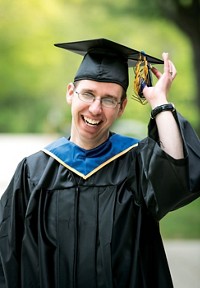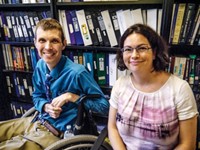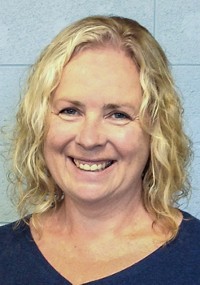Advertisement
Grab your lab coat. Let's get started
Welcome!
Welcome!
Create an account below to get 6 C&EN articles per month, receive newsletters and more - all free.
It seems this is your first time logging in online. Please enter the following information to continue.
As an ACS member you automatically get access to this site. All we need is few more details to create your reading experience.
Not you? Sign in with a different account.
Not you? Sign in with a different account.
ERROR 1
ERROR 1
ERROR 2
ERROR 2
ERROR 2
ERROR 2
ERROR 2
Password and Confirm password must match.
If you have an ACS member number, please enter it here so we can link this account to your membership. (optional)
ERROR 2
ACS values your privacy. By submitting your information, you are gaining access to C&EN and subscribing to our weekly newsletter. We use the information you provide to make your reading experience better, and we will never sell your data to third party members.
Careers
Small-Scale Chemistry
Primarily undergraduate institutions increasingly offer opportunities of large schools in a smaller setting
by Faith Hayden
September 8, 2008
| A version of this story appeared in
Volume 86, Issue 36

WHEN DESTIN S. LEINEN entered Oklahoma Panhandle State University as a biology major in the early 1990s, getting a Ph.D. in chemistry was the furthest thing from his mind.
"I needed 13 hours of chemistry to complete my biology major, and I thought I would never get through it," Leinen says. He didn't have the best experience with the subject in high school and was "really dreading" the required courses.
It wasn't until he took his first chemistry class with Lynn Gardner at OPSU—a small, primarily undergraduate institution (PUI) in the tiny town of Goodwell—and other courses later with James Hill, that his fears subsided. "They made chemistry exciting for me," he says. "Hill got me into the lab working on metal purification by electrochemistry, and I just fell in love with it."
OPSU is not a school that receives a lot of federal funding for research. But it and other small liberal arts schools like it are making do with what they have and are playing an important role in the chemical enterprise. Leinen recalls Hill having to scavenge what he could from where he could and making a lot of instruments from components of other pieces of equipment. While in the lab, "sometimes the first thing you had to do was put the instrument back together and get it running," he says.
"The Oklahoma panhandle was far away from repairs back in the 1970s and '80s," Hill explains. "Factory repair required shipping the whole machine to somewhere else. If we could tear into the machine and replace something ourselves, we could keep going with the classwork. And of course, if the students watch, they can get the idea that they could also learn to do simple repairs or rebuilding someday."
Although these might sound like difficult conditions for a lab, Leinen says his education wasn't hampered by the department's lack of resources. One of the classes Hill taught at OPSU was basic electricity as it applied to science. Hill would pull apart electrical devices to save the parts, but then he discovered that the stored parts had other classroom applications as well.
"The students would put those parts together to learn how each worked or how they worked together," Hill says. "They would actually build simple devices to see how the individual pieces all come together for the complex device."
"As a result, I'm well grounded in instrumental methods," Leinen says.
Because OPSU is so small—U.S. News & World Report lists its 2008 undergraduate student body at 1,142—Leinen received lots of personal attention. Gardner and Hill had an open-door policy: If a student ever had a problem, the student could come and discuss it. "Both men would sit down and identify what you didn't understand and help you through that roadblock," Leinen says.
Hill succeeded in guiding Leinen through his chemistry troubles. Leinen went on to get a Ph.D. in chemistry from Kansas State University and eventually returned to OPSU to take over as Hill's replacement for one academic year after Hill retired. Although Leinen has since moved on and now works as a government contractor in the Applied Technology/R&D Division of B&W Pantex, a warhead assembly plant in Amarillo, Texas, he still credits Hill and Gardner with his love of chemistry. "I owe them my whole career," he says.
Success stories like Leinen's are not hard to find within PUIs. Although the majority of PUI faculty aren't publishing cutting-edge research in scientific journals, and their students aren't working in research labs with top-name professors, PUIs still provide students with a quality chemistry education. And increasingly, PUIs are requiring professors to do research and adjusting teaching schedules to allow for it, says Cindy Samet, a chemistry professor at Dickinson College, in Carlisle, Pa.
According to Samet, liberal arts colleges that value research are moving to a slightly lighter teaching load, giving professors more time in the lab.
"Teaching is still a clear first priority," she says, "but research is a very close second." Samet says cutting-edge research is now happening at some PUIs. "We're doing top-notch research, just not cranking it out as fast" as chemists at bigger universities do, she says.
Moses N. F. Lee, dean of natural and applied sciences at Hope College, in Holland, Mich., has also noticed the heavier research trend and notes that Hope College has been accommodating the change for some time by lightening teaching loads. "I know of other colleagues doing the same thing, and several come to mind: University of Richmond, Bowdoin College, Williams College, and Pomona College."
Michael P. Doyle, chair of the University of Maryland chemistry department, has experienced both of these academic worlds. He also acknowledges that PUIs are incorporating more time for research. "The higher the quality of the institution, the more research is expected" of it, he says.
OVER THE COURSE of his career, Doyle has taught at liberal arts schools such as Trinity University and Hope College and at large institutions such as the University of Arizona and the University of Maryland. Doyle says that although more state-of-the-art research is happening at research institutions (RIs), PUIs have provided the chemistry world with some as well.
He cites Pomona College's Corwin Hansch, considered to be the father of the quantitative structure-activity relationship concept, which is a pillar of pharmaceutical discovery research and development, and Hope College's Lee, who developed new drugs to treat malaria and tuberculosis that are ready to enter the marketplace. Doyle is no lightweight either. While teaching at Trinity College, he discovered and developed chiral dirhodium(II) carboxamidate catalysts, known as the Doyle catalysts.
Having been heavily involved with both PUIs and RIs, Doyle doesn't believe one or the other can be deemed a better learning environment. "It really depends on the person," he says. "You can reach stardom going in either way. A student at a large institution has to come in with a lot more social confidence than a person coming into a PUI. You can get lost in a big institution. Some students need a lot of hands-on care and personal contact, which you can't get at a big state university."
Samet agrees. "When I look out at my class at Dickinson, I know who is struggling, what their issues are, and what topics they need help on. It's a different level of knowing your students," she says.
Lee also found class size to be a big benefit of teaching at a smaller school versus a larger institution. "Small classes and working closely with students have allowed me to become a more effective teacher and mentor to my students," he says. "It is a lot easier to learn 30 names than 300 names in an introductory class at a major research institution."
Hope College, which has an undergraduate student body of 3,203, was ranked fourth nationwide by U.S. News & World Report in the "Undergraduate Research & Creative Performance" category, just below Massachusetts Institute of Technology, Stanford University, and the University of Michigan.
Just as personality may dictate in which learning environment a particular chemistry student would fare better, personality may also influence the environment in which a professor wants to teach.
"Teaching is still a clear first priority, but research is a very close second."
Samet says she didn't know that she wanted to teach at a small liberal arts school until she attended one. She vicariously experienced a big university through her older brother. Samet had the impression that "you're a number" at a larger institution, and it wasn't for her. "What really clinched it was when I came to Dickinson" as an undergraduate, she says. "I loved the lifestyle the professors seemed to have. They worked hard, but they had hobbies and interests. At a larger university the work is very administrative. It's a lot of pressure, and it's very difficult."
Lee says he specifically chose Hope College because of its national reputation as an outstanding college for undergraduates to study science. He appreciated that faculty at the school were evaluated with nearly equal emphasis in the areas of teaching, research, and service to the department, college, and community. "This is definitely an attractive feature for me—that we expect faculty to develop as a whole," he says. "In contrast, this is often not the case at RIs, where research accomplishments, especially in the number of grants received and papers published, are paramount."
Like the University of Maryland's Doyle, Lee acknowledges that there are a number of pros and cons to each type of institution, and it is up to an individual to decide which would be a better fit professionally.
RIs have a vast infrastructure of support, including examination graders and technical staff such as machinists and electricians. RIs also provide professors with large start-up packages, "but that comes with an enormous expectation to be successful in seeking major funding from federal agencies," Lee says. "Often, the granting of tenure is hinged on getting major funding at RIs. Even though the start-up packages are significantly lower at PUIs, the pressure to become successful in getting federal grants is dampened."
As for Leinen, he has moved on to other things outside of the classroom, but he says he would like to go back. He acknowledges that although he enjoyed research and the change of pace it brought, he enjoyed teaching more because of the interaction with students. "I've seen people who are brilliant researchers but can't pass what they know on to others," he says. "Then there are those who are excellent teachers but just aren't in tune with what's happening because they are out of the research realm and don't keep up with the journals."
According to Doyle, a large number of his former PUI students have taken academic positions at large universities, "so if you think going to a PUI is inhibiting in any way, it's not."
"Not everyone is cut out for the liberal arts college life," Samet says. "Some people don't want to have to explain chemistry to undergraduates." But, she says, just because teaching at a PUI means teaching at a smaller scale, it "doesn't make it less valuable."
Education Supplement
- Introduction: Communities Of Practice
- This year's education supplement looks at green chemistry curricula.
- The Ivory Tower Goes Green
- Green chemistry is transforming the curriculum.
- Web Exclusive: Green Education
- Online Green Chemistry Resources
- Rocky Mountain Green
- News from the sixth annual ACS Summer School on Sustainability & Green Chemistry.
- Staying Alive
- A cadre of scientists is trying to revitalize the nuclear and radiochemistry fields.
- Small-Scale Chemistry
- Primarily undergraduate institutions provide students with a quality chemistry education.
- A Purposeful Break
- Recharge your academic career—and your life—with a sabbatical.











Join the conversation
Contact the reporter
Submit a Letter to the Editor for publication
Engage with us on Twitter